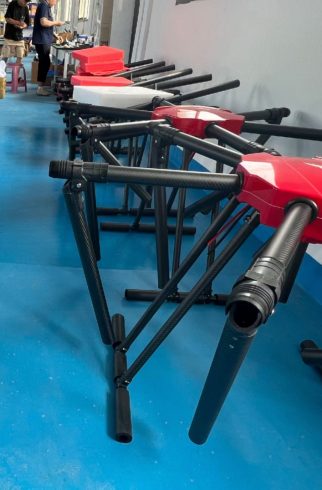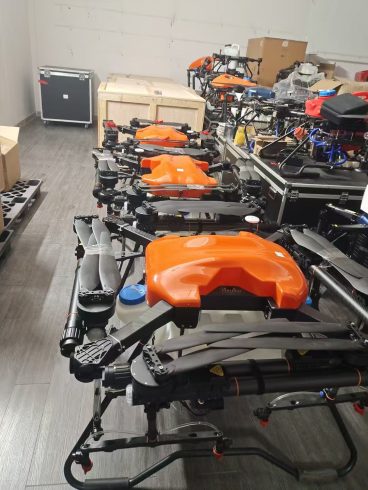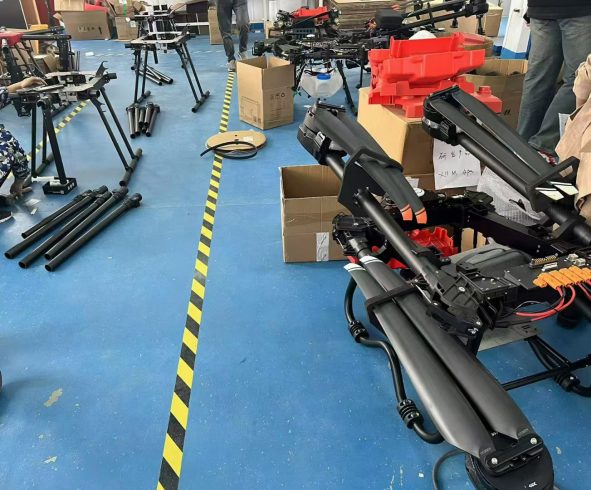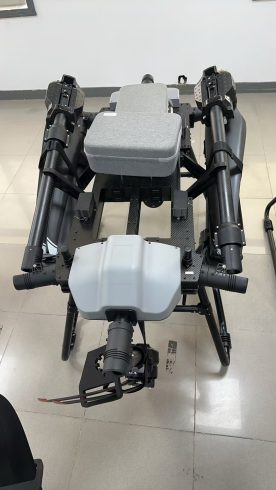![图片[1]-Multi-Rotor vs Fixed-Wing Spraying Drones: Which is Right for Modern Agriculture?-msoen](https://www.msoen.com/wp-content/uploads/2025/04/164e113f97214114-576x1024.jpg)
The global agricultural drone market is booming, with spraying drones becoming indispensable tools for precision farming. Among the most debated topics in this space is the choice between multi-rotor and fixed-wing drones. Both technologies offer unique advantages, but their suitability depends on farm size, terrain, budget, and operational goals. This article breaks down the technical, practical, and economic factors farmers and agricultural businesses must consider when selecting a spraying drone.
- Design and Functionality: Understanding the Basics
Multi-Rotor Drones
- Design: Equipped with multiple rotors (typically 4–8), multi-rotor drones are vertically takeoff and landing (VTOL) machines.
- Flight Control: Rely on electronic speed controllers (ESCs) to adjust rotor speeds for stability and maneuverability.
- Payload Capacity: Generally lighter (2–10 liters per tank), suited for small to medium-scale farms. Fixed-Wing Drones
- Design: Mimic traditional airplanes with a single rigid wing, requiring forward motion for lift.
- Flight Efficiency: Glide longer distances using thermal updrafts, ideal for large-scale operations.
- Payload Capacity: Can carry larger tanks (10–30 liters), reducing refueling frequency.
- Key Comparisons: Pros and Cons
a. Maneuverability and Accessibility
- Multi-Rotor:
- Pros: VTOL capability allows operation in tight, uneven terrain (e.g., orchards, hillsides).
- Cons: Limited range (15–30 minutes per flight) and smaller payload reduce efficiency for vast fields.
- Fixed-Wing:
- Pros: Longer flight times (60–90 minutes) and extended range (50–100 hectares per flight).
- Cons: Require open takeoff/landing zones and advanced piloting skills for obstacle avoidance. b. Precision vs. Coverage
- Multi-Rotor: Excel in precision tasks, such as spot-spraying around obstacles or contour-following in terraced fields.
- Fixed-Wing: Optimized for uniform crop coverage but struggle with irregularly shaped plots. c. Cost and Maintenance
- Multi-Rotor:
- Lower upfront cost but higher operational expenses (frequent battery swaps, limited payload).
- Easier maintenance due to modular components.
- Fixed-Wing:
- Higher initial investment (due to robust airframe materials) but lower per-hectare costs for large farms.
- Requires specialized mechanics for repairs.
- Application Scenarios: Matching Technology to Needs
Multi-Rotor Drones: Ideal For
- Small to Medium Farms: <50 hectares with complex layouts.
- High-Value Crops: Orchards, vineyards, or greenhouse farming where precision is critical.
- Variable Terrain: Hills, waterlogged fields, or areas inaccessible to tractors. Fixed-Wing Drones: Ideal For
- Large-Scale Operations: >100 hectares of flat, open farmland (e.g., wheat, corn).
- Time-Sensitive Tasks: Seasonal spraying where rapid coverage is prioritized.
- Cost-Effective Scaling: Farms seeking to minimize labor and fuel expenses.
- Environmental and Regulatory Considerations
- Multi-Rotor: Stricter noise regulations in residential areas due to rotor sounds.
- Fixed-Wing: Longer flights may increase chemical drift risks if not calibrated properly.
- Both: Must comply with local UAV spraying laws (e.g., buffer zones, pesticide licensing).
- The Future: Hybrid Models and Technological Innovations
Emerging trends are blurring the lines between multi-rotor and fixed-wing designs:
- VTOL Hybrid Drones: Combine fixed wings with rotors for extended range and agility (e.g., WingtraOne).
- AI-Driven Autonomy: Auto-adjust flight paths and spray rates based on real-time crop data.
- Electric-Hybrid Engines: Reduce environmental impact while extending operational windows.
- How to Choose: A Decision-Making Framework
- Assess Farm Size and Shape: Prioritize multi-rotor for fragmented land, fixed-wing for expansive plots.
- Budget Analysis: Compare total ownership costs (equipment + operational expenses).
- Crop Type and Terrain: Match technology to field complexity and crop sensitivity.
- Regulatory Compliance: Verify local laws on payload limits, altitude restrictions, and chemical use.
- Case Studies: Success Stories in the Field
- Case 1: A Japanese rice farm reduced pesticide use by 30% using multi-rotor drones to target submerged fields.
- Case 2: An Australian wheat producer increased yields by 15% with fixed-wing drones covering 200 hectares daily.
Conclusion
The choice between multi-rotor and fixed-wing spraying drones hinges on operational scale, terrain, and strategic goals. While multi-rotors shine in precision and flexibility, fixed-wing drones excel in efficiency and scalability. As hybrid models and AI-driven automation reshape the industry, farmers must stay informed about evolving technologies to maximize returns. For agricultural businesses, the future lies not in picking sides but in leveraging the right tool for the task—whether it’s a nimble multi-rotor or a tireless fixed-wing.
Keywords: multi-rotor vs fixed-wing drones, agricultural drone spraying, VTOL drones, fixed-wing pesticide application, precision farming technology, drone payload capacity, farming efficiency solutions.












暂无评论内容